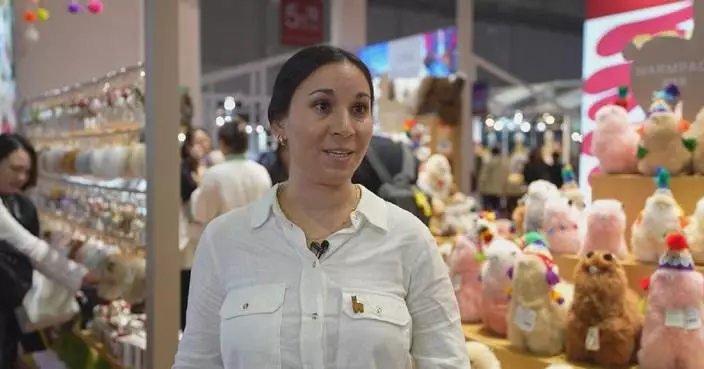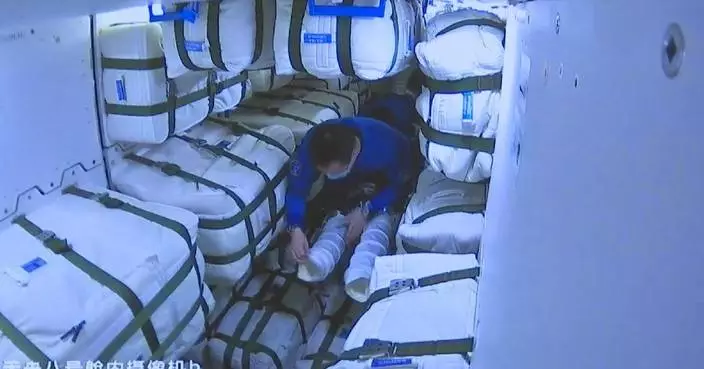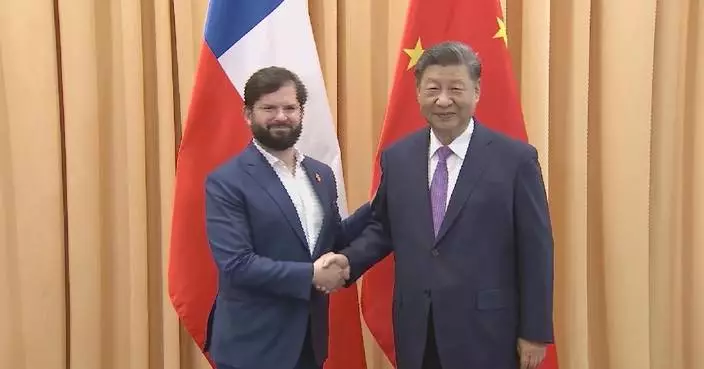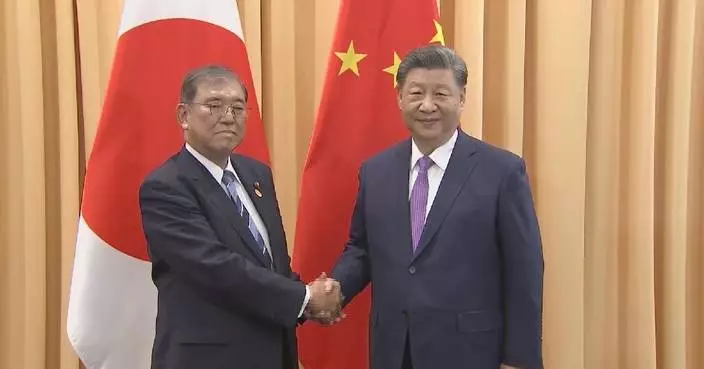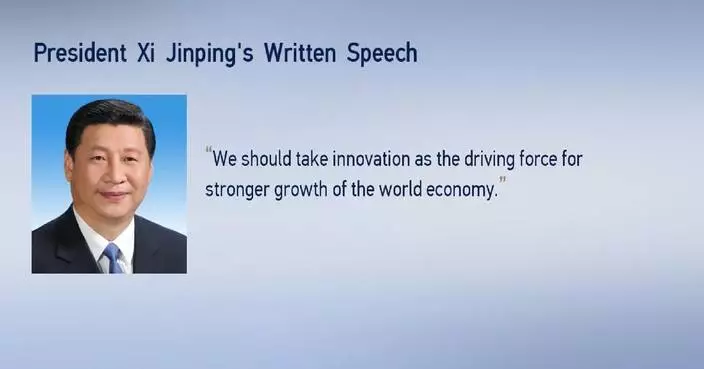Peruvian university student Anna Paula Peralta said she hopes to use her Chinese language skills to help bridge cultural divides, building on efforts between leaders as the 31st Asia-Pacific Economic Cooperation (APEC) Economic Leaders' Meeting takes place in the Peruvian capital of Lima.
This year's meeting is being held on Friday and Saturday under the theme "Empower, Include, Grow", gathering heads of state and other dignitaries from 21 member economies across the Asia-Pacific region, including China, the United States, and other major economies in Southeast Asia.
With the world eying China's advancement of its ties with numerous Asia-Pacific countries at the summit, Peralta emphasized that China has long made efforts to help young people like her learn the Chinese language and immerse themselves in its rich culture.
"I studied at Jilin University in China. I studied Chinese for one year at that university. I also studied at a Chinese school in Peru for 11 years. There, I learned about Chinese culture, which inspired me to learn more about the language at the Confucius Institute. At the same time, I also participated in the Chinese Bridge Chinese proficiency competition in Peru and won the second place. I received a scholarship that gave me the opportunity to learn Chinese more deeply and get to know China better. This experience was really great. China provides many opportunities for Peruvians who are interested in learning Chinese language and culture, including scholarships and exchange programs," she said.
Peralta hopes the APEC meeting brings about more fruitful partnerships and contributes to the sustainable development of all APEC members.
In the future, Peralta aims to utilize her knowledge of communication to promote cultural exchanges between China and Peru, serving as a bridge between the two peoples.
"I am currently studying communication at the University of Lima in Peru. I hope that the topics discussed at APEC can include cooperation agreements between stronger countries and weaker countries to create opportunities for economic growth in isolated communities. At the same time, environmental protection is also important. It is very important to protect and conserve the natural resources of APEC members," she said.

Peruvian student expects to build closer ties with China through APEC
China's cargo spacecraft Tianzhou-8 has successfully delivered supplies to the orbiting Tiangong space station.
The Long March-7 Y9 rocket carrying the spacecraft blasted off at 23:13 Beijing Time (1513 GMT) on Friday from the Wenchang Spacecraft Launch Site in the southern island province of Hainan.
After about 10 minutes, the Tianzhou-8 separated from the rocket and entered its designated orbit. Its solar panels then unfolded.
"Overcoming various unfavorable factors, our team has achieved complete success in this mission, reflecting our rich experience and the capabilities of the equipment, facilities and personnel of the launch site for all missions," said Zhang Nan, commander of the launch mission.
At 02:32 Beijing Time (18:32 GMT) on Saturday, about three hours after the launch, the Tianzhou-8 cargo craft autonomously docked at the rear docking port of the space station's core module Tianhe.
"Rendezvous and docking three hours after launch is faster, convenient and safer compared with other approaches. So it will be the main rendezvous approach for future cargo craft missions. The Tianzhou-8 has a much larger loading capacity than Tianzhou-7. It mainly transports some time-sensitive cargo that can provide strong technical support for the orbiting space station's scientific experiments," said Feng Yong from China Aerospace Science and Technology Corporation.
Friday's launch is the third cargo delivery mission since China's manned space program entered the space station's application and development stage.
The Tianzhou-8 spacecraft carried approximately six tons of supplies, including living necessities for astronauts, propellant, and 485 kilograms of scientific experiment materials.
Notably, the 'lunar soil brick', created by Chinese scientists to simulate the composition of lunar soil, is also aboard Tianzhou-8 for space exposure experiments aimed at confirming whether the 'brick' can be used to construct houses on the moon.
There is also a unique species -- fruit flies -- among the scientific experiment payloads carried by Tianzhou-8. They are expected to help complete the country's first space sub-magnetic-microgravity composite environment science experiment.
Afterwards, the Shenzhou-19 crew, which was sent into the space station on October 30, will enter the cargo craft and transfer the items as scheduled.

China’s Tianzhou-8 cargo craft successfully delivers supplies to space station
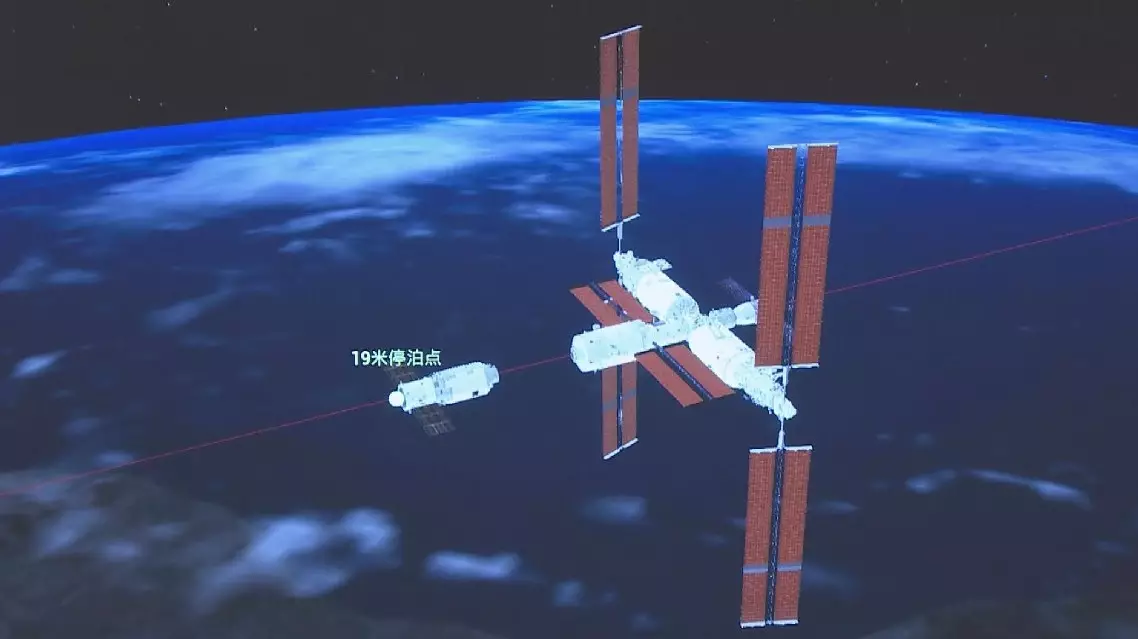
China’s Tianzhou-8 cargo craft successfully delivers supplies to space station





